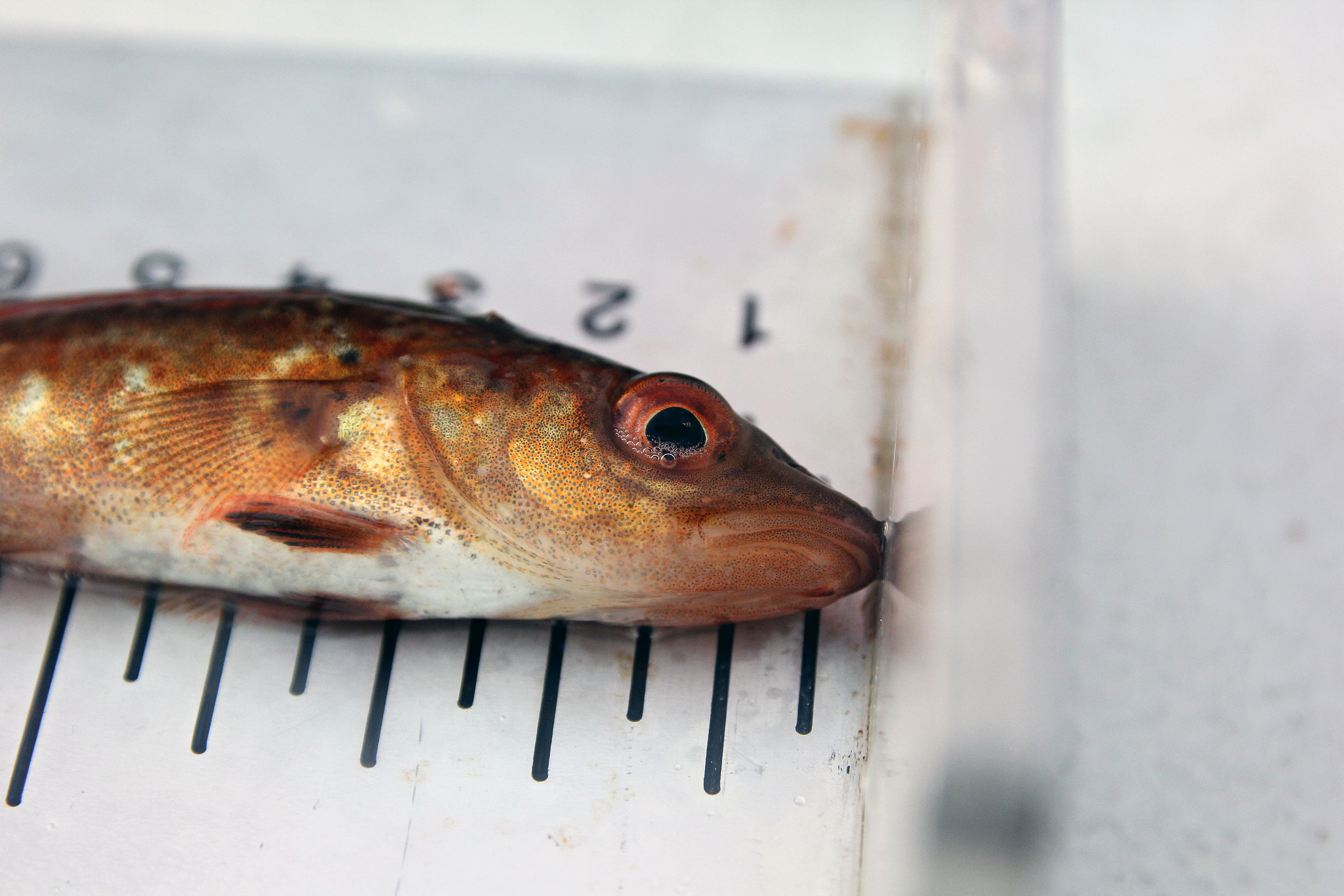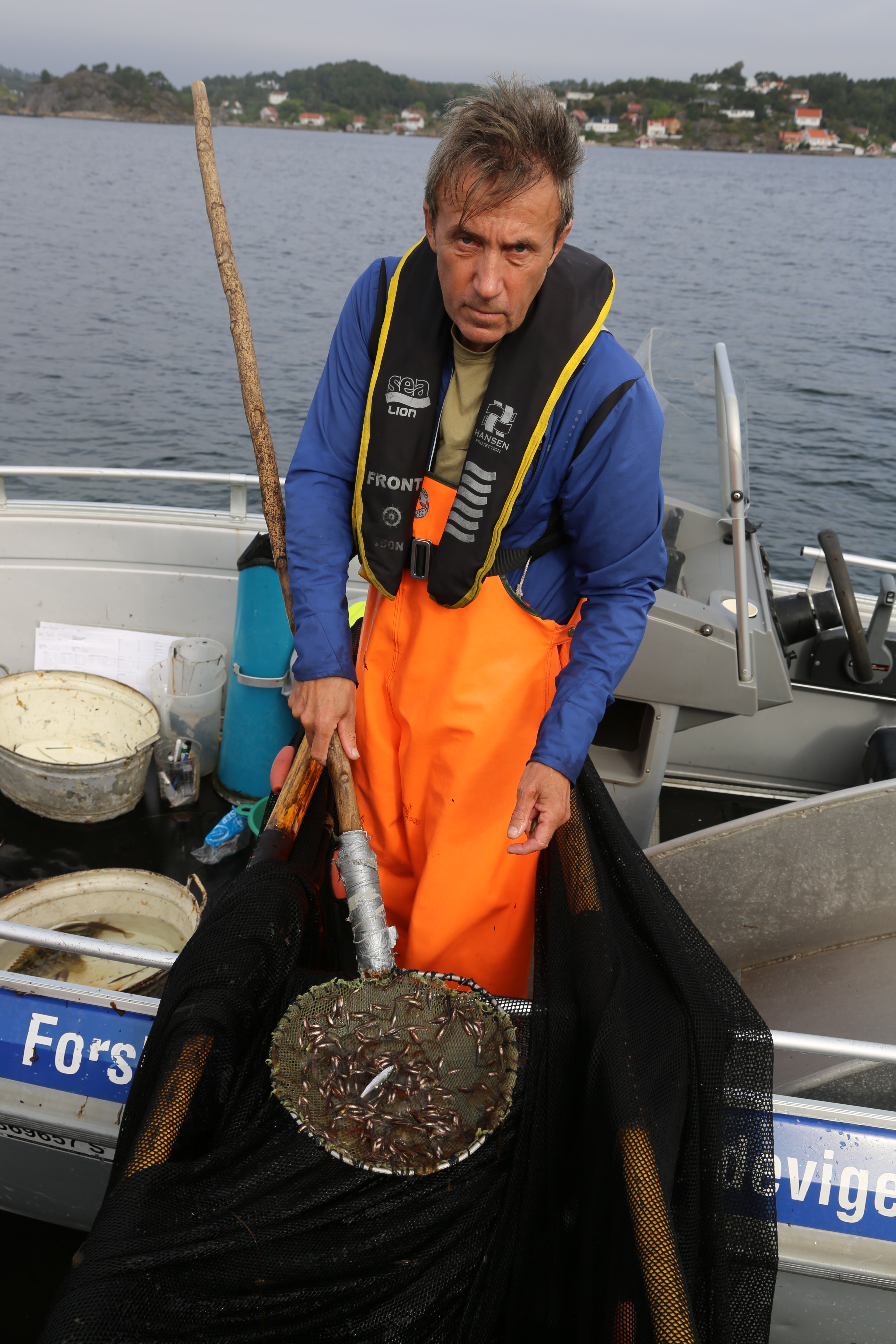Total collapse in food sources for the youngest cod along the south coast of Norway

Every September since 1919, researchers from the Institute of Marine Research have measured the abundance of fish using normal beach seines at over 100 fixed locations along the Skagerrak coast.
Photo: Espen Bierud / Institute of Marine ResearchPublished: 19.08.2019 Updated: 23.08.2019
In the late 1990s, researchers at the Institute of Marine Research (IMR) started surveying six areas off Arendal using a beach seine with an extra-fine mesh. The seine was capable of catching the small organisms like small fish and shrimps that juvenile cod and other juvenile fish completely depend on during their first winter. Every fortnight for most of the year, the researchers performed beach seine hauls at the six chosen locations. This finally gave them an insight into the availability of food sources for the youngest fish, or zero-year fish as they are technically referred to.
Zero-year fish used to survive
However, this story begins even longer ago than that.
Since as far back as 1919, marine scientists have been systematically recording fish numbers along the coast of Skagerrak using a normal beach seine. Those records give scientists a unique insight into how marine ecosystems change over time, and the conclusion is clear.
Coastal cod are struggling.

Before the year 2000, the size of year-classes of cod varied greatly. In other words, there was a lot of year-to-year variation in how many juveniles the researchers observed in the autumn. This kind of variation is perfectly natural, and although the year-classes varied in size, the researchers still found that the zero-year fish generally survived until the next year.
“If there were a lot of juveniles one year, it resulted in many one-year-olds the following year and many two-year-olds the year after that again”, says Tore Johannessen, a researcher at the IMR.
No longer the case
Big year-classes of juveniles still occur. But then something happens.
“The problem is that we don’t see them again after that. The following year we catch almost no one-year-olds in our beach seine, even after big year-classes of zero-year fish”, says Johannessen.
The most important food sources for zero-year fish through the first winter are small fish and shrimps, whose numbers explode in late summer and the autumn.
Or rather, that used to be the case. New studies show that this has changed dramatically.
Almost no food left
Let’s rewind to the 1990s and the fine-meshed net. Before that, researchers knew little about the availability of food sources for juvenile cod. The organisms in question are so small that they slip through the mesh of the normal beach seine. But with the new net, scientists could finally monitor the small fish and shrimps that are so important to zero-year cod.
Between 1997 and 1999, Johannessen and his colleagues measured the abundance of the organisms that juvenile cod prey on. In 1997 they observed almost 40,000 individuals per beach seine haul. The following summer was cold, resulting in a decline in the number of most summer spawners, so the figure fell to 12,000. In 1999 it rebounded to 50,000 individuals.
Then the researchers waited a number of years before performing further surveys with the fine-meshed beach seine. By then the numbers had declined dramatically. In 2016 and 2017 they recorded around 1,700 individuals. In 2018 that number had fallen to 400-500.
“It’s not just the cod that live off these organisms. They represent a large amount of biomass that very many animals depend on, including sea birds that hunt in shallow waters”, says Johannessen.
The figures were published by Inger Aline Norberg Aanonsen in her Master’s thesis in January 2019, and Johannessen is working on several scientific papers based on the findings.
Abrupt change in the plankton community in 2002
Catches of the juvenile cod’s favourite dishes have collapsed from 50,000 to 500 individuals in 19 years, but what has actually happened? What has caused the decline?
Johannessen believes the main reason is that the water is warmer. The increase in temperature affects the zooplankton that cod feed on during the first months after they are born. Moreover, changes in the zooplankton community have caused a collapse in the populations of the small fish that cod depend on when they get slightly bigger, in other words during their first autumn and winter.
In 2002, researchers observed such large and sudden changes in the area’s plankton community that they called it a regime shift. The changes affected both phytoplankton and zooplankton, and this has worked its way up the food chain, with the knock-on effects including much lower survival rates for cod.
“We have seen these kinds of local regime shifts along the Skagerrak coast in the past. The worrying thing about them is that we have never seen the ecosystem return to its previous state”, says Johannessen.
He believes that the total collapse in food sources for juvenile fish along the Skagerrak coast is another impact of the regime shift in the plankton community in 2002.
“Marine ecosystems appear to have lower tolerance limits than the individual species they comprise. This means that a regime shift may occur before the individual species in the ecosystem have been significantly affected by the environmental changes. Frighteningly, that makes it almost impossible to predict when a regime shift will occur”, he says.

The sea is 1.5 degrees warmer
Since the 1980s, the summer temperature of the water along the Skagerrak coast has risen by 1.5 degrees. The aim of the Paris Agreement is to limit global warming to precisely 1.5 degrees.
“Even an increase that small has big impacts on fish communities. This is an early warming of how climate change will affect marine life”, says Johannessen.
He believes that what the researchers have observed along the Skagerrak coast represents a possible scenario for how climate change may affect marine ecosystems and fish communities.
“The century-long record of fish numbers along the coast of Skagerrak make this a unique, natural laboratory”, says Johannessen.
